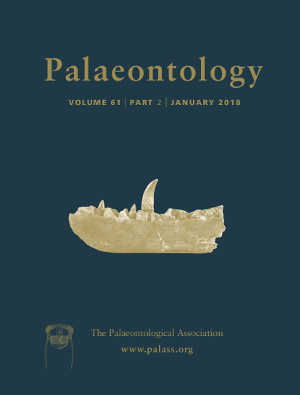Reg. Charity No. 1168330

Identifying feather morphology in extinct dinosaurs is challenging due to dense overlapping of filaments within fossilized plumage and the fact that some extinct feather morphologies are unlike those of extant birds or those predicted from an ‘evo‐devo’ model of feather evolution. Here, we compare a range of dinosaur taxa with preserved integumentary appendages using high‐resolution photographs to better understand fossil feather morphology and gain insight into their function and evolution. A specimen of the basal paravian Anchiornis possesses contour feathers disarticulated from the plumage, revealing a novel feather type: a ‘shaggy’, open‐vaned, bifurcated feather with long barbs attached to a short rachis, which is much simpler than the contour feathers of most extant birds. In contrast, it is likely that the contour feathers of Sinosauropteryx were simpler than those seen in Anchiornis; a ‘tuft’ morphology of multiple barbs connected at their bases (e.g. via a shared follicle), but lacking a rachis, is tentatively inferred. However, conclusive morphological descriptions await the discovery of isolated Sinosauropteryx contour feathers. Paravian wing feathers also show potentially plesiomorphic traits. Comparison with Confuciusornis suggests that Anchiornis wing feathers were at least partially open‐vaned. Combined with the interpretation of Anchiornis contour feathers, this suggests that differentiated barbicels are relatively derived compared to pennaceous feathers and the appearance of wings. ‘Shaggy’ contour feathers probably influenced thermoregulatory and water repellence abilities, and, in combination with open‐vaned wing feathers, would have decreased aerodynamic efficiency. Simplified, open‐vaned wing feathers were also observed on the oviraptorosaur Caudipteryx, consistent with, but not necessarily diagnostic of, its suggested flightlessness. Taken together, these observations have broad implications for how we depict a wide variety of dinosaurs and how we view the function and evolution of feathers.